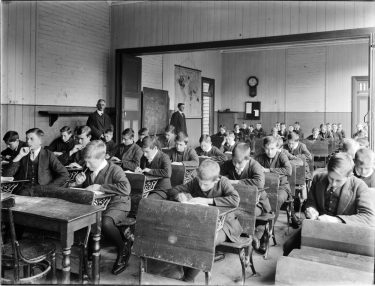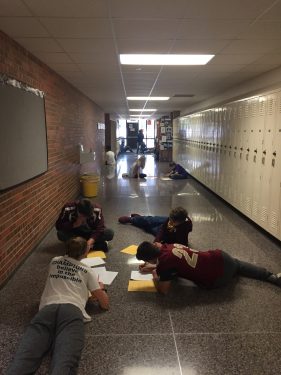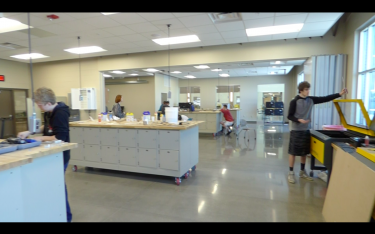When discussing the bond projects on the November 7th ballot, we often get caught up in the specifics of financial and construction components. As a result, we don’t talk enough about the educational impacts the bond projects can have on student learning. When we do discuss it, we highlight the need for “21st-century learning environments” or “flexible and collaborative spaces.” These terms can be challenging outside of education to understand.

Many of us understand the factory model of education — we lived it for our entire educational career. In this model, one teacher instructs a classroom of students sitting in neat rows. The teacher imparts knowledge by lecturing and students are graded through examinations often limited to recall of facts. Once the teacher “taught” the material, whether the student “learned” it or not was not considered. Grades were a way to sort students rather than describe their grasp of the subject matter.
This shift from a teacher-centered model to a student-centered model requires different thinking and different spaces. Rather than having uniform spaces throughout an entire school, a variety of different sized spaces best supports learners. In some cases, we need larger spaces to engage students. In others, it is expanded space (not just hallways) adjacent to classrooms that can be used by students for breakout groups to work together (collaborate) on a project during class time. In other cases, it is space where a teacher can work with a small group of students or even an individual student to help overcome barriers to they face in learning the curriculum.

Employers tell us strong academic skills are important but no longer enough. Students also need to know how to communicate effectively and how to collaborate in a variety of ways. Research tells us that more students learn better ‘by doing’ than just by listening and dutifully taking notes. The factory model classroom approach does not support teaching this skillset. When our teachers employ strategies to develop these skills, they use the available space which is most often a hallway — not an optimal place for students to be collaborating. In short, our current instructional spaces are based on an antiquated model and deficient in serving our students for their futures.
Employers are craving for students who have the technical skills to enter the workforce immediately after high school. Our current Career Technical Education (formerly known as vocational) staff is very good. Our programming is great but limited by antiquated spaces. Once again, spaces that are open and flexible are key in being able to offer up-to-date Career Technical Education programming that can prepare students for the workforce. When comparing our spaces to neighbors like Burnsville, our Career Technical Education spaces are deficient.

In summary, the educational deficiencies of our current high school are clear to many who use it every day. New spaces that provide a foundation for approaches to student-centered instruction rather than factory model teacher-centered instruction are essential if we plan to truly make sure students leave our high school prepared for their individual futures.
Interested in seeing the current Northfield High School for yourself? Attend our last tour on Saturday, October 28th at 10 am. The tour will meet in the lower cafeteria.
Other Referendum 2017 posts:
- Read about the long-lasting educational impact of early learning (also part of the bond proposal) here.
- Read this guest post by Director of Finance Val Mertesdorf regarding what property taxes really cost.
- Read posts by Superintendent Hillmann and Director of Buildings and Grounds Jim Kulseth about renovation vs. new construction at Northfield High School.
